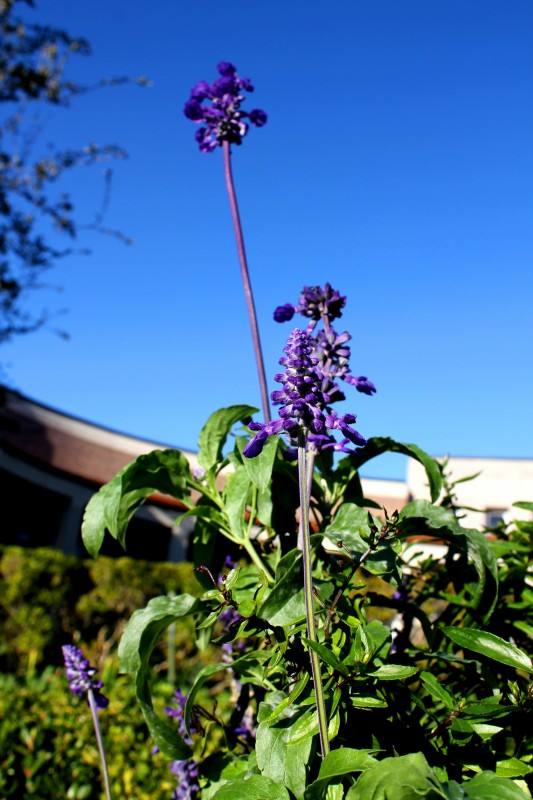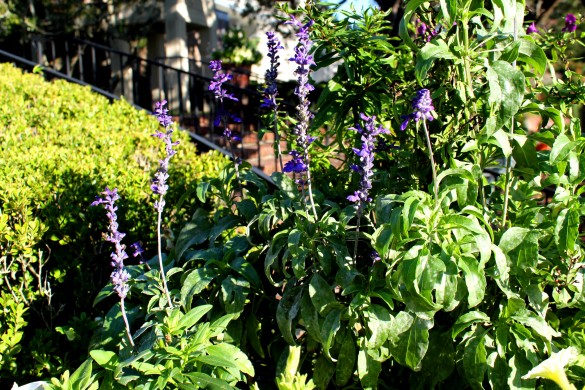Written by Matthew Patterson, Visitor Services Associate

Salvia derives its name from the Latin salvere “to save”; referring to the long-held belief in the herb’s healing properties. Pliny the Elder was the first author known to describe a plant called “Salvia” by the Romans, likely describing the type species for the genus Salvia, Salvia officinalis. The common modern English name sage derives from Middle English sawge, which was loaned from Old French sauge, and like the botanical name, stems from Latin salvere.

The leaves of the Salvia flower are typically entire, but sometimes toothed or pinnately divided. The flowering stems bear small bracts, dissimilar to the basal leaves, though in some species they are ornamental and showy. The flowers are produced in racemes, or panicles, and generally produce a showy display with flower colors ranging from blue to red, with white and yellow less common.
In addition to their decorative value there are varieties of Salvia that are used for medicinal purposes, those for traditional ceremonial purposes and even those used for cooking. The common Sage belonging to the Salvia family.


